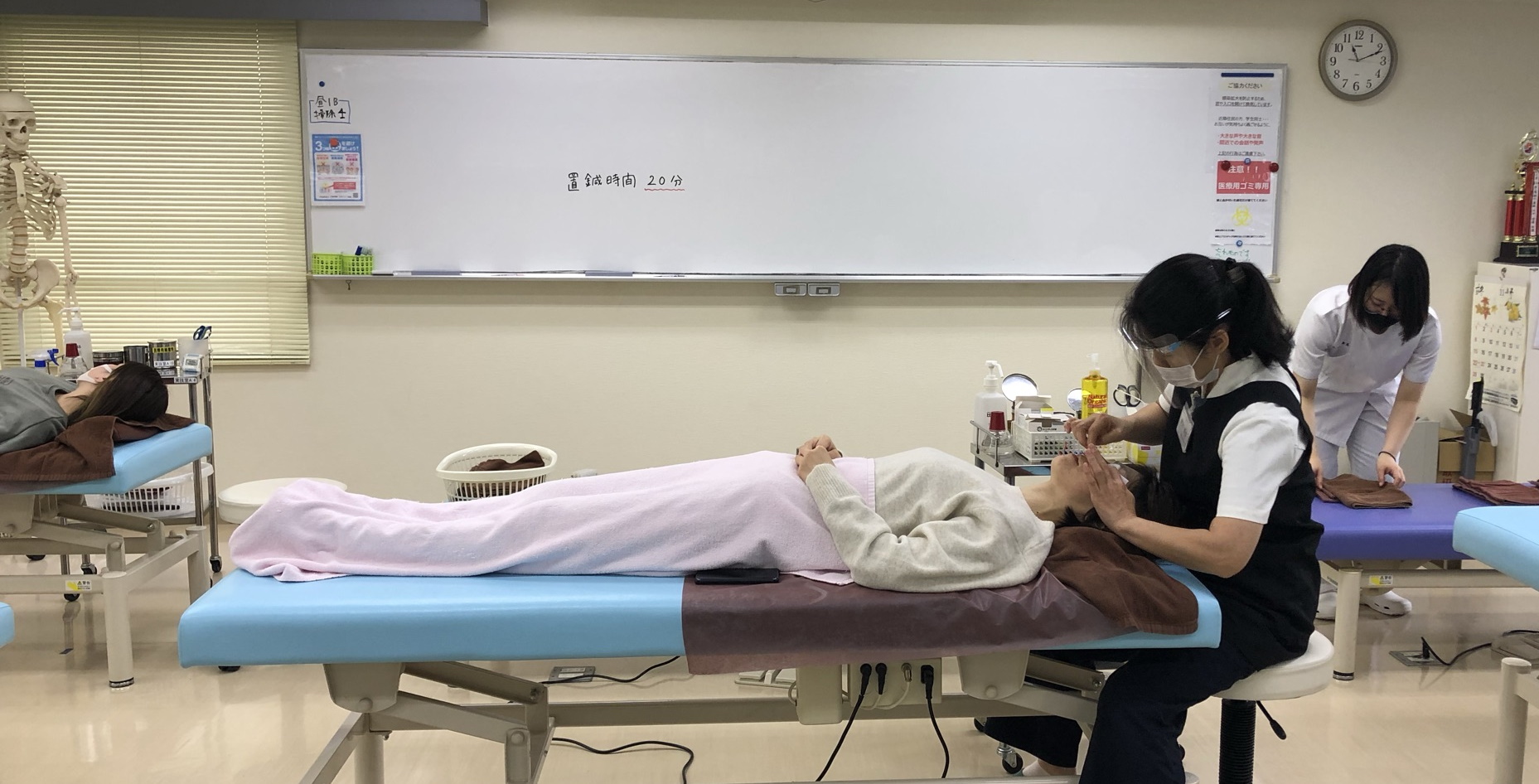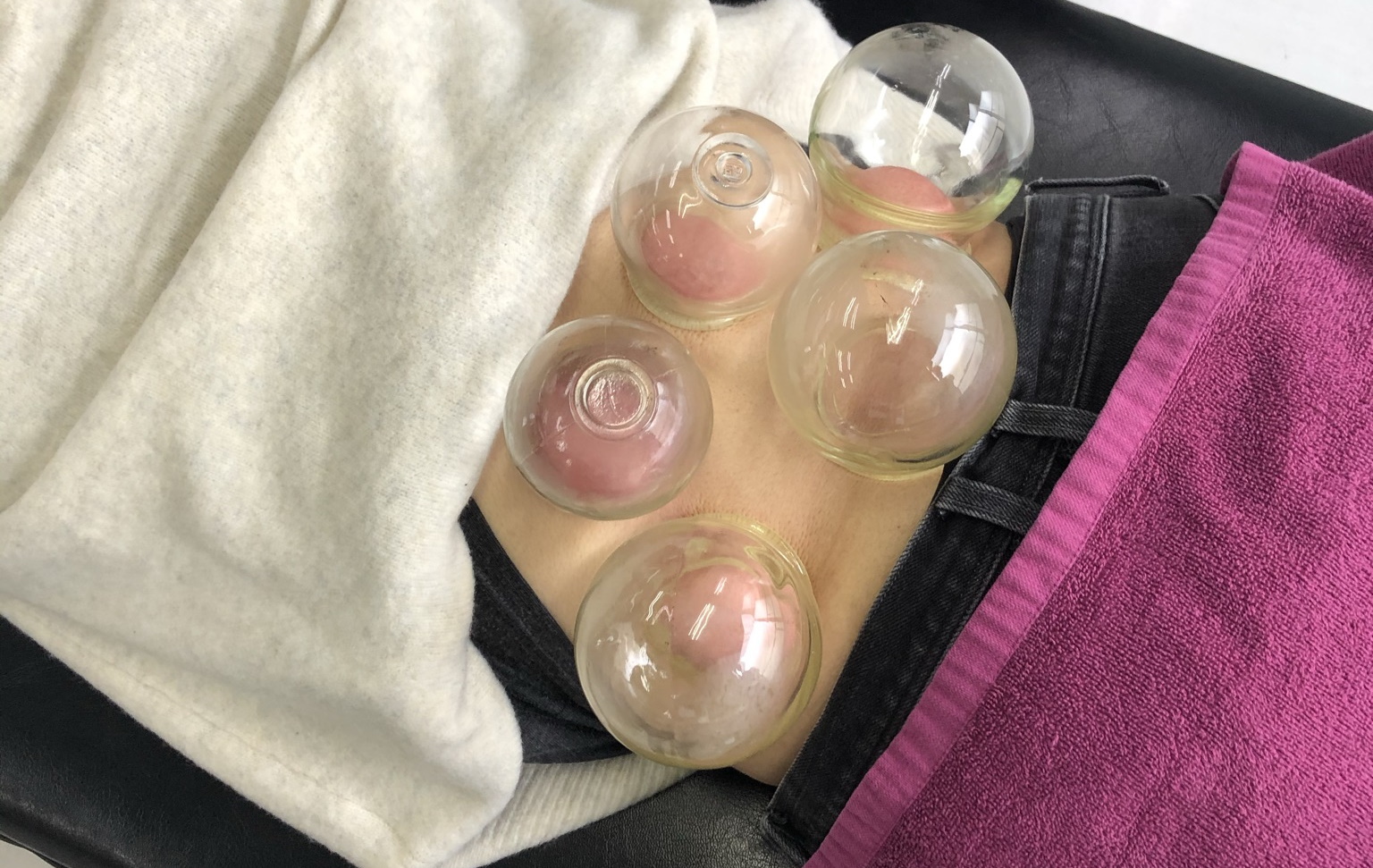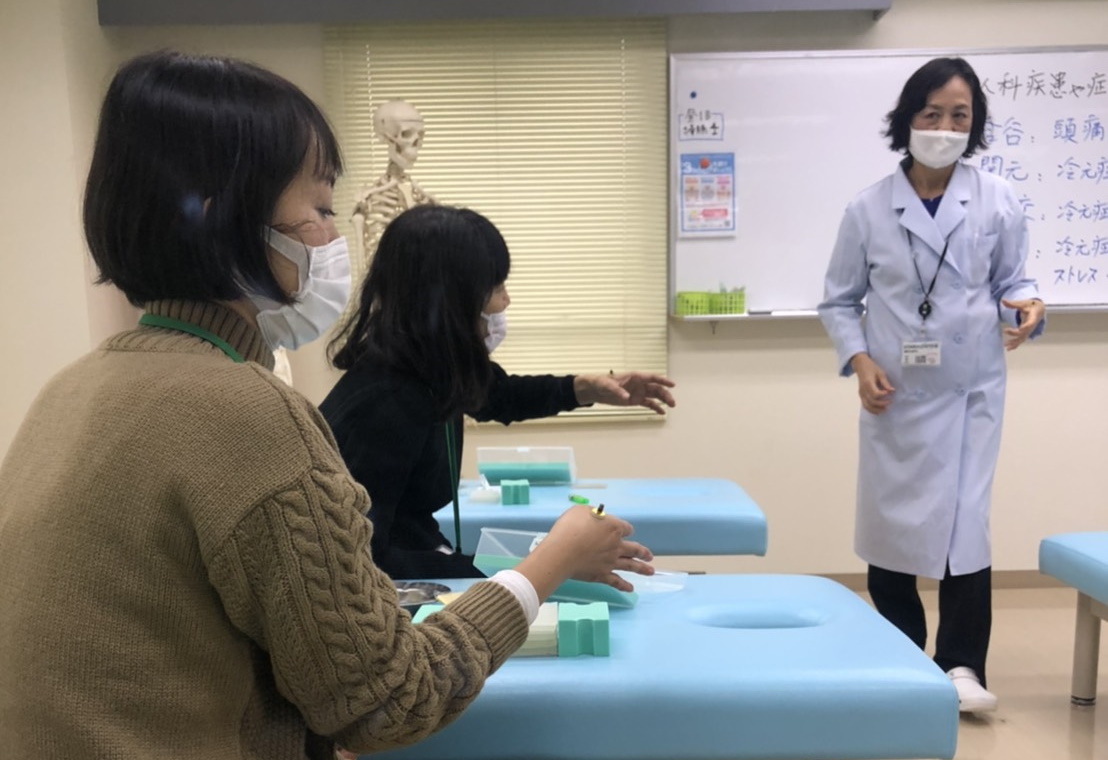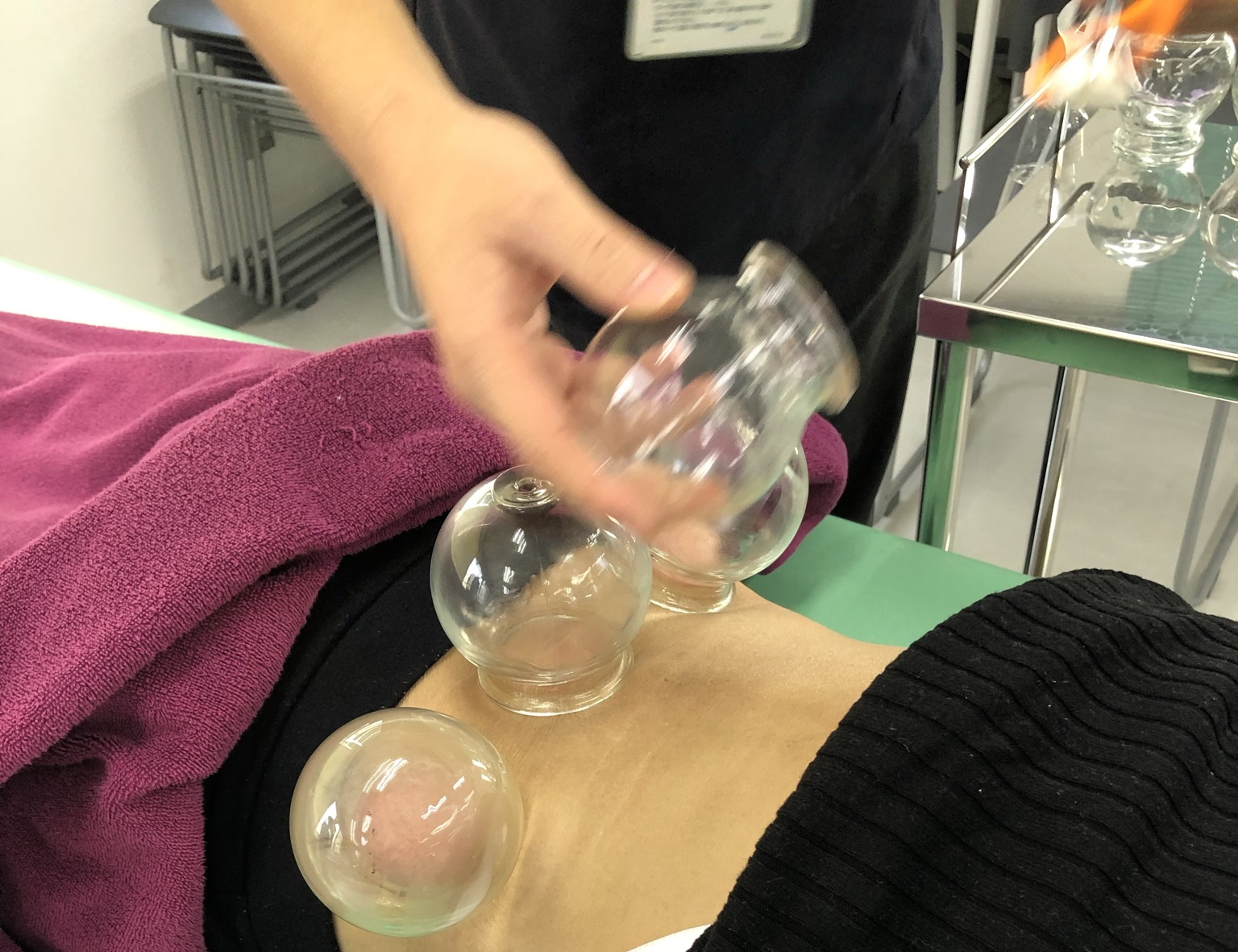2020/11/29
Background
I am a Chinese Medicine doctor from Taiwan. I moved to Japan and have been accepted to a college of acupuncture and moxibustion. The school's name is Japan Judo Therapy, Acupuncture & Moxibustion Therapy College.
Before classes start in April, the school has arranged several preparatory courses. I have already attended an anatomy class combined with practical experience performing judo therapy technique and acupuncture. Today's course is about cosmetic acupuncture.
Cosmetic Acupuncture
After checking in, I go to the practice room. Each student lays down on a bed and waits for the teacher's help. Ms. Aoki is good at the "horizontal needle method" of cosmetic acupuncture, where needles enter the dermis to stimulate and activate dermal cells.
After simple disinfection, the needles are quickly inserted up the jaw lines, smile lines, cheekbones, and above the eyebrows. The teacher is very skilled and there is hardly any pain. I use Chinese to ask the teacher for advice. Do the needles have to be inserted from the bottom of the face to the top? The teacher answers that from top to bottom is also okay.
After the needles have been in for 20 minutes, a classmate helps to remove them. She presses the side of each needle with one hand and withdraws it with the other hand. Because of the pressure, withdrawing a needle causes more sensation than when it was inserted. But when the classmate tells me nicely to let her know if it hurts, I naturally answer that there is no pain.
After all the needles have been removed, the teacher comes to massage my face with hot essential oils. Afterwards, she applies a warm compress and massages my face. It feels so good!

Moxibustion and Cupping Experience
After finishing the facial acupuncture and massage, I immediately go to the next classroom to experience moxibustion and cupping. I get moxibustion on the Hegu point (LI4) of each hand. On one hand I try a mini moxa that is attached to an adhesive base. On the other hand, I try a triangle moxa pillar made on-site. Surprisingly, the latter is placed directly on the skin and burned. When it feels too hot, the therapist picks up the burning moxa pillar with her bare hands and places it in a metal dish filled with water.
Japanese cupping seems to predominately use glass cups. Alcohol-soaked cotton is held with long clamps and lit on fire. The burning cotton is briefly slid into the cup, taken back out, and then the mouth of the cup is placed directly on the body. The rim of the glass cup is cold, but the air inside is warm. The glass cup is heavy and creates a tight vacuum. Compared with my previous experience using plastic cups, the glass cups feel more solid. The cups stay on for about 15 minutes. After taking them off, the places with poor blood circulation have deep purple bruises.

Sharing Experiences
The next activity is weight, muscle mass, and fat measurement. I talk to some alumni about how to study for the national exam. In this three-year acupuncture college, in addition to learning Western medicine's pathology, laws, and regulations, we must also learn Eastern medical theory, acupuncture points, and treatments. There is a ton of content!
After flipping through some texts on the theories of Eastern medicine, acupuncture points, etc., I feel the acupuncture points are exactly the same as in Chinese medicine. Of course, the pronunciations of the names are completely different and I will have to get used to them.
Women's Acupuncture and Moxibustion, Chinese Traditional Acupuncture and Moxibustion
After the morning preparatory course, there is an afternoon experiential course for newly admitted students. Since my classmates had signed up, I go to register and successfully get in. At noon, I have a quick lunch with my classmates and then came back to continue learning.
In the afternoon, Mr. Ruixia Wang, a Chinese teacher who specializes in Chinese herbal medicinal food, hosts "Women's Acupuncture and Moxibustion, Chinese Traditional Acupuncture and Moxibustion". The whiteboard lists commonly used acupuncture points for women and their primary uses in treatment. There are three kinds of needles and two kinds of moxa on each person's desk. The teacher demonstrates acupuncture on the Hegu (LI4), Guanyuan (CV4), and Taichong (LV3) points. Then everyone tries the two kinds of moxa on the Hegu points of their hands. I felt warmth spread along the meridians, producing an opening sensation. The green moxa is weaker and the yellow moxa is hotter. The classmate behind me thought the yellow moxa too hot to bear and removed it early on.

When practicing needle insertion, we use silicon films of different hardnesses to simulate skin. There are two types of Japanese needles with thicknesses of 0.16mm and 0.20mm. Japanese needles are all designed to be very thin. The thickest needles I have seen in online shopping malls are only 0.25mm. The third type of needle is a Chinese needle, with length 1.5 inches and thickness 0.30mm. Although the Chinese needle has a needle guide tube attached, Chinese needles are to be inserted by hand. 0.30mm is considered to be a fairly thick and easy to insert needle. In my clinical experience, for a 1.5 inch needle, 0.25mm thickness is just right.

After the afternoon course ends, the three of us who have already been admitted leave. There is no need for us to attend the school introduction session. I have the opportunity to chat with Teacher Wang. She has a PhD in Medicine from Nihon University and seems very accomplished, but she has not opened a clinic. She says that teachers at the acupuncture college are also responsible for the work at the affiliated acupuncture and moxibustion institute so she has no spare time. I ask her how to start a Chinese Traditional Medicine business in Japan. She tells me to obtain the qualification of an acupuncturist first, and then get the licenese for selling over-the-counter medicines. I wonder if the teacher has a Japanese Doctor of Medicine degree, but I don't ask. In Japan, one must have an M.D. (in Western medicine) in order to practice Eastern medicine. There are also three different levels of qualifications for selling Chinese Traditional Medicine: the Kampo medicine specialist, pharmacist, and registered seller of over-the-counter medicines.
Today's school courses were rewarding experiences. The preparatory course design of the Japan Judo Therapy, Acupuncture & Moxibustion Therapy College is very thoughtful. We received ¥6000 worth of cosmetic acupuncture and cupping treatment. It was time well spent!
